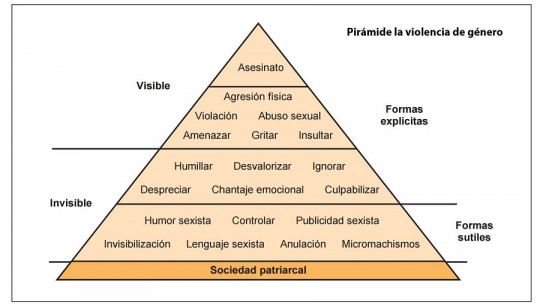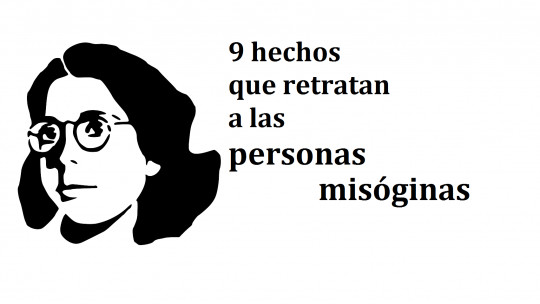
Violence is a phenomenon unfortunately present throughout the history of humanity, making some thinkers wonder if human beings are violent and aggressive by nature. There are many representations and manifestations of violence; The most widespread being physical, verbal and psychological violence.
However, there is a more subtle but equally dangerous and hurtful form of violent behavior: symbolic violence.
Usually, Symbolic violence is hidden beneath the surface of many of our social and cultural interactions, going unnoticed by most people. Unlike physical violence, symbolic violence leaves no visible scars, although its impact can be just as devastating. It refers to the mechanisms through which power and domination are exercised through symbols, meanings and cultural representations.
The objective of this article is to shed light and increase awareness about symbolic violence, highlighting its relevance in people’s daily lives and its influence on the construction of individual and collective identities. Through five examples of symbolic violence, we can appreciate the subtlety and power of symbolic violence to influence our perceptions and behaviors, often without us realizing it.
What is symbolic violence?
Symbolic violence is a theoretical notion developed by French sociologist Pierre Bourdieu in the 1970s According to Bourdieu, symbolic violence is a more subtle form of domination than physical or direct violence, but equally powerful in the reproduction and perpetuation of social inequalities. It is based on the ability to impose meanings, values and cultural representations that end up being accepted as natural and legitimate by those who suffer from them.
Symbolic violence operates in the construction of social reality by influencing the perception that people have of themselves and others, as well as the power structures that govern society. Through institutions such as family, education, media and cultural practices, values, norms and beliefs that support social hierarchies are transmitted and reinforced
A fundamental characteristic of symbolic violence is the internalization of oppression by subordinate groups or individuals. Those who belong to socially disadvantaged segments tend to adopt and legitimize dominant values and power structures, even though these perpetuate their own oppression.
Symbolic violence is thus reproduced through the unconscious complicity of the oppressed. Through the construction of stereotypes and biased representations of gender, race, class and other social categories, the media contributes to the formation of a dominant culture that marginalizes certain groups and perpetuates prejudices.
Gender is one of the areas most affected by symbolic violence The imposition of traditional gender roles, the objectification of women in the media, and the invisibilization of non-binary identities are just a few examples of how gender inequality is perpetuated through symbolization.
Examples of symbolic violence
Next, we are going to present five examples of symbolic violence that illustrate how this form of subtle aggression can manifest itself in different contexts of daily life, having a significant impact on people’s daily and everyday lives. These examples will help us understand how symbolic violence affects different groups and perpetuates inequalities and stereotypes in society.
1. Stigmatization of mental health
The stigmatization of mental health is a process of symbolic violence that affects millions of people around the world. Despite advances in the understanding of mental health and its components, Prejudices and stereotypes persist that generate hostile environments for people with mental disorders The media plays a crucial role in shaping opinions and attitudes towards mental health.
Often, stories and characters are presented that reinforce harmful stereotypes, such as the link between mental illness and violence or the inability to lead a productive life while having a mental disorder. These representations perpetuate the exclusion of these people and the distrust of the general population towards them.
This stigma leads to affecting access to mental health services. Due to discrimination and fear of rejection, many people who need psychological support avoid seeking professional help. Stigma can create significant barriers to accessing care, contributing to a lack of timely and appropriate treatment.
2. Institutional racism
Institutional racism is an insidious form of symbolic violence manifested in social, administrative and legal practices and structures that perpetuate racial discrimination. Unlike individual discrimination, institutional racism operates at a systematic level and affects multiple aspects of the lives of people belonging to racial minority groups.
Government, educational, and social institutions play a crucial role in perpetuating institutional racism. Through discriminatory policies and practices, an environment is created in which people from racial minority groups face inequalities and structural barriers that hinder their access to opportunities and resources.
One of the most obvious examples of institutional racism is found in the educational system. Schools in disadvantaged areas, which are often home to a majority of students from minority groups, may receive fewer resources and have less qualified teachers compared to schools in more privileged areas. This educational gap perpetuates inequality from an early age, affecting students’ future opportunities and contributing to the reproduction of marginalization.
The judicial system may also be plagued by institutional racism Studies have shown that people from racial minority groups often face unequal treatment in the criminal justice system, from arrests to sentencing. Racial discrimination can influence judicial decision-making, leading to a greater likelihood of people from minority groups being convicted or receiving harsher sentences.
3. Objectification of women
This reductionist practice and symbolic violence is based on representing women mainly as sexual objects for the enjoyment and satisfaction of the male gaze, without taking into account their individuality, intelligence or abilities. In advertising, movies, television shows, and music, it is common to find images that perpetuate the objectification of women. They are shown in suggestive poses, with idealized bodies and in submissive or passive roles which reinforces the idea that women are objects of desire and not autonomous agents.
The objectification of women contributes to the objectification and sexualization of women in society. This can lead to discrimination in the workplace, in personal relationships, and gender-based violence. When women are reduced to mere objects of desire, they are denied their humanity and treated as inferior or subordinate.
4. Sexist language
Words have power and give meaning to our experiences and how we represent them in language. From an early age, we absorb linguistic patterns that perpetuate gender roles and expectations. This construction of gender through language involves establishing “appropriate” categories or components for each gender, which restricts individual freedom and promotes discrimination.
Sexist language can be exclusionary and marginalizing non-binary people or people who do not identify with traditional, binary gender categories Using pronouns and terms that automatically and exclusively assume the existence of two genders, promotes the invisibility and denial of the existence of other gender identities, contributing to the discrimination and alienation of these people.
5. Cultural stereotypes
Cultural stereotypes are classic examples of symbolic violence that involve the simplification and generalization of certain cultural or ethnic groups. These stereotypes may be based on historical prejudices, false beliefs, or misunderstandings, and are often transmitted through popular culture, media, and social interactions.
Cultural stereotypes can have a profound impact on self-image and cultural identity of people belonging to an ethnic or cultural group. By being reduced to a limited set of characteristics or behaviors, people may feel stigmatized or made invisible. This can lead to self-stigmatization and a struggle to fit into the mold imposed by stereotypes.
Furthermore, these stereotypes can encourage discrimination and exclusion of certain ethnic or cultural groups in society. When negative stereotypes are widely accepted, they can lead to marginalization and prejudice against people who belong to those groups. This can manifest itself in the workplace, education, and in daily interactions.
Conclusion
The examples presented reveal how symbolic violence permeates various spheres of society, exerting a profound impact on the perceptions, relationships and opportunities of different groups. Understanding these manifestations is the first step to combat symbolic violence and create a more just and inclusive society. The fight against symbolic violence requires the collective effort to challenge and transform harmful stereotypes, prejudices and cultural representations. Only through awareness and committed action can we build a world where respect, equality and dignity prevail for all.








